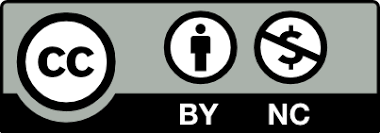
Without opportunities for students to reflect upon their community work in the context of course content, the learning potential of community projects is limited. There should be some mechanism that encourages students to link their community experience to course content and to reflect upon why the community work is important.
Below are some reflection exercises or assignments that are particularly helpful in community-based projects:
Personal journals provide a way for students to express thoughts and feelings about the community experience throughout the semester. Structured journals provide guidance so that students link personal learning with course content.
Critical Incident Journal
This journal includes a set of prompts that ask students to consider their thoughts and reactions and articulate the action they plan to take in the future: Describe a significant event that occurred as part of the community experience. Why was this event significant to you? What did you learn from this experience? How will this incident influence your future behavior? What new action steps will you take next time?
Three-Part Journal
Each page of the weekly journal entry is divided into thirds: description, analysis, application. In the top section, students describe some aspect of the community experience. In the middle section, students analyze how course content relates to the community experience. And in the application section, students comment on how the experience and course content can be applied to their personal or professional life.
Key-Phrase Journal
The instructor provides a list of terms and key phrases at the beginning of the semester for students to include in journal entries. Evaluation is based on the use and demonstrated understanding and application of the terms.
Double-Entry Journal
Students describe their personal thoughts and reactions to the service experience on the left page of the journal, and write about key issues from class discussion or readings on the right page of the journal. Students then draw arrows indicating relationships between their personal experience and course content.
Dialogue Journal
Students submit loose-leaf journal pages to the instructor for comments every two weeks. This can provide regular feedback to students and prompt new questions for students to consider during the semester. Dialogue journals also can be read and responded to by a peer.
Directed writings ask students to consider the community experience within the framework of course content. The instructor identifies a section from the text book or class readings (e.g., quotes, statistics, key concepts) and structures a question for students to answer in 1-2 pages. A list of directed writings can be provided at the beginning of the semester.
Experiential research papers ask students to identify an underlying social issue they have encountered at the community site. Students then research the social issue. Based on their experience and library research, students make recommendations to the agency for future action. Class presentations of the experiential research paper can culminate semester work.
Online discussion is a way to facilitate reflection with the instructor and peers involved in community projects. Students can write weekly summaries and identify critical incidents that occurred at the community site. Instructors can post questions for consideration and topics for directed writings. A log of the email discussions can be printed as data to the group about the learning that occurred from the community experience.
Personal narratives are based on journal entries written regularly during the semester. Students create a fictional story about themselves as a learner in the course. This activity sets a context for reflection throughout the semester with attention directed to a finished product that is creative in nature. Personal narratives give students an opportunity to describe their growth as a learner.
Exit cards are brief note card reflections turned in at the end of each class period. Students are asked to reflect on disciplinary content from class discussion and explain how this information relates to their community involvement. Exit cards can be read by instructors in order to gain a better understanding of student experiences. Instructors may want to summarize key points and communicate these back to students during the next class.
Weekly log is a simple listing of the activities completed each week at the community site. This is a way to monitor work and provide students with an overview of the contribution they have made during the semester.

Attribution: Drawn from Best Practices in Community-Engaged Teaching/Reflection by Vanderbilt University's Center for Teaching, licensed under CC BY-NC 4.0 / Some text omitted from original

